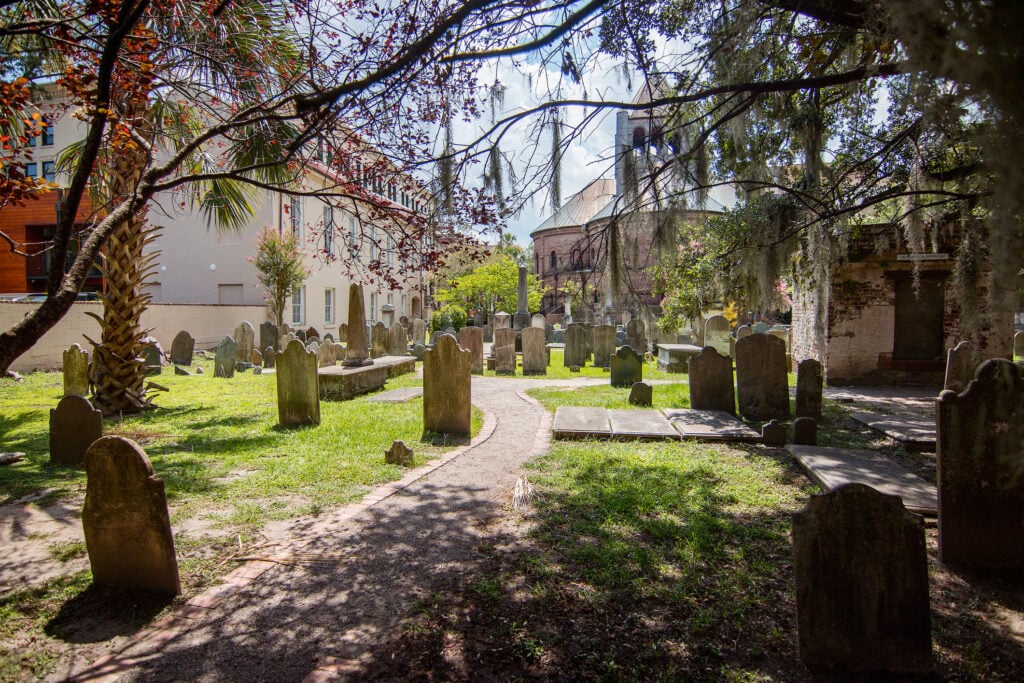The amazing story of the Israelites crossing the flood-staged Jordan River through God’s miraculous power is found in Joshua 3-5. The Jordan River was the only physical barrier between them and the long-awaited promised land. The culmination of this journey offered relief from 40 years of desert wandering and countless funerals due to disobedience, not to mention the traumatic experience of slavery while in Egypt. When the feet of the priests who carried the “Ark of the Covenant” touched the water’s edge, the river miraculously parted and the priests stood firmly in the middle of the Jordan until all the people had safely crossed over the river’s dry pathway.
Prior to the crossing of the Jordan, God instructed Joshua to “Take for yourselves twelve men from the people, one man from every tribe, and command them, saying, ‘Take for yourselves twelve stones from here, out of the midst of the Jordan, from the place where the priests’ feet stood firm’” (Joshua 4:2-3, NKJV). The purpose was to build a monument with stones commemorating God’s awesome power in parting the Jordan so that when future generations asked, “What do these stones mean to you?” (Joshua 4:6), the Hebrews would be able to share the nation’s history that included the miraculous dividing of the Red Sea, being guided through the desert by a cloud by day and a pillar of fire at night, being fed by manna from heaven and, as they prepared to enter the Promised Land, the supernatural parting of the Jordan — all precious stones of remembrance.
In America’s Early Years
Each year during the month of February some African Americans celebrate their history by focusing on historical milestones or “stones of remembrance” that have led to progress on their journey from slavery to freedom. The arduous journey began in 1619 when 20 African slaves arrived in Jamestown, Virginia, marking the beginning of slavery in America.
In 1770, Crispus Attucks, one of the first American colonists who advocated for America’s independence and freedom and equality for slaves, became the first person to die for these causes in the Boston Massacre, which led to the American Revolution. Six years following Attucks’ death, these promising and hopeful words were published in the Declaration of Independence on July 4, 1776: “All men are created equal.” The American Civil War ensued 85 years later. Fought over the moral and economic issues of slavery, it was deemed the deadliest war in America’s history with 620,000 casualties — approximately 2 percent of the developing nation’s population. The ultimate sacrifices for the equality and other unalienable rights promised in the Declaration of Independence represent cherished stones of remembrance.
The Emancipation Proclamation issued by President Abraham Lincoln on January 1, 1863, as well as the ratification of the Thirteenth Amendment, contributed to the end of slavery and should be considered stones of remembrance, but not without the threat of an altered course of history. The withdrawal of federal troops following the Reconstruction era in 1877, for example, resulted in a collaborated effort by Southern governors to seemingly create a voter-suppression system that continued into the 20th century. Fortunately, the Voting Rights Act of 1965, which prohibited racial discrimination, would later become a stone of remembrance.
Throughout the era of slavery there were abolitionists who united their voices in support of equality for all people. Proudly joining this chorus were members of the newly formed Seventh-day Adventist Church that included founders James and Ellen White; John Byington, the first president of the General Conference; and Joseph Bates, a revivalist minister credited with Sabbatarian Adventism. These leaders opposed the system of slavery on biblical principles that all humankind was created by God: “So God created man in His own image; in the image of God He created him; male and female He created them” (Gen. 1:28). In some ways, those legacy years serve as stones too.[1]
Modern Times
Martin Luther King Jr. was a notable catalyst for the American Civil Rights Movement and desegregation. Some of the stones of remembrance for these causes include Brown vs. Board of Education (school desegregation); the Montgomery Bus Boycott (public transportation desegregation); the Civil Rights Act of 1964 (prohibited discrimination based on race, color, religion, sex or national origin); the Voting Rights Act 1965 (outlawed discriminatory voting practices); and Affirmative Action (increased representation of groups previously discriminated against). The establishment of Historically Black Colleges and Universities (HBCUs) produced additional stones of remembrance by educating numerous African American physicians, attorneys, educators, and clergy when many other schools barred admission to persons of color. Oakwood University is represented among them as the only Seventh-day Adventist HBCU.
The 21st century has produced some colossal stones of remembrance with the election of Barack Obama as the 44th President of the United States; Kamala Harris as the 49th Vice President of the United States; and Pastor Raphael Warnock, Georgia’s first African American United States Senator.*[2]
African American history has phenomenal potential to continue producing stones of remembrance as it educates and heightens awareness. Without African American history, the story of American history is incomplete. As the ancient stones from the Jordan were a witness of God’s providential care and protection, African American history produces stones of remembrance that serve as memoirs of God’s goodness, compassion, grace and love toward African Americans and all people with whom He desires to live eternally.
— Washington Johnson, D.Min, is an assistant director of Adventist Chaplaincy Ministries for the North American Division, and a Captain in the U.S. Navy Reserve.
[1] Right from the start, early Adventists took the words of Scripture to heart, including Paul’s words that indicate we are all one in Christ: “There is neither Jew nor Greek, there is neither slave nor free, there is neither male nor female; for you are all one in Christ Jesus” (Gal. 3:28). The salvific premise here — and something that the Adventist Church espouses — is that Jesus died for all people and heaven will not be segregated.
[2] In spite of these remarkable stones of remembrance, the nation is still plagued with disparities in healthcare, education, housing and employment—issues in dire need of positive history-making.




